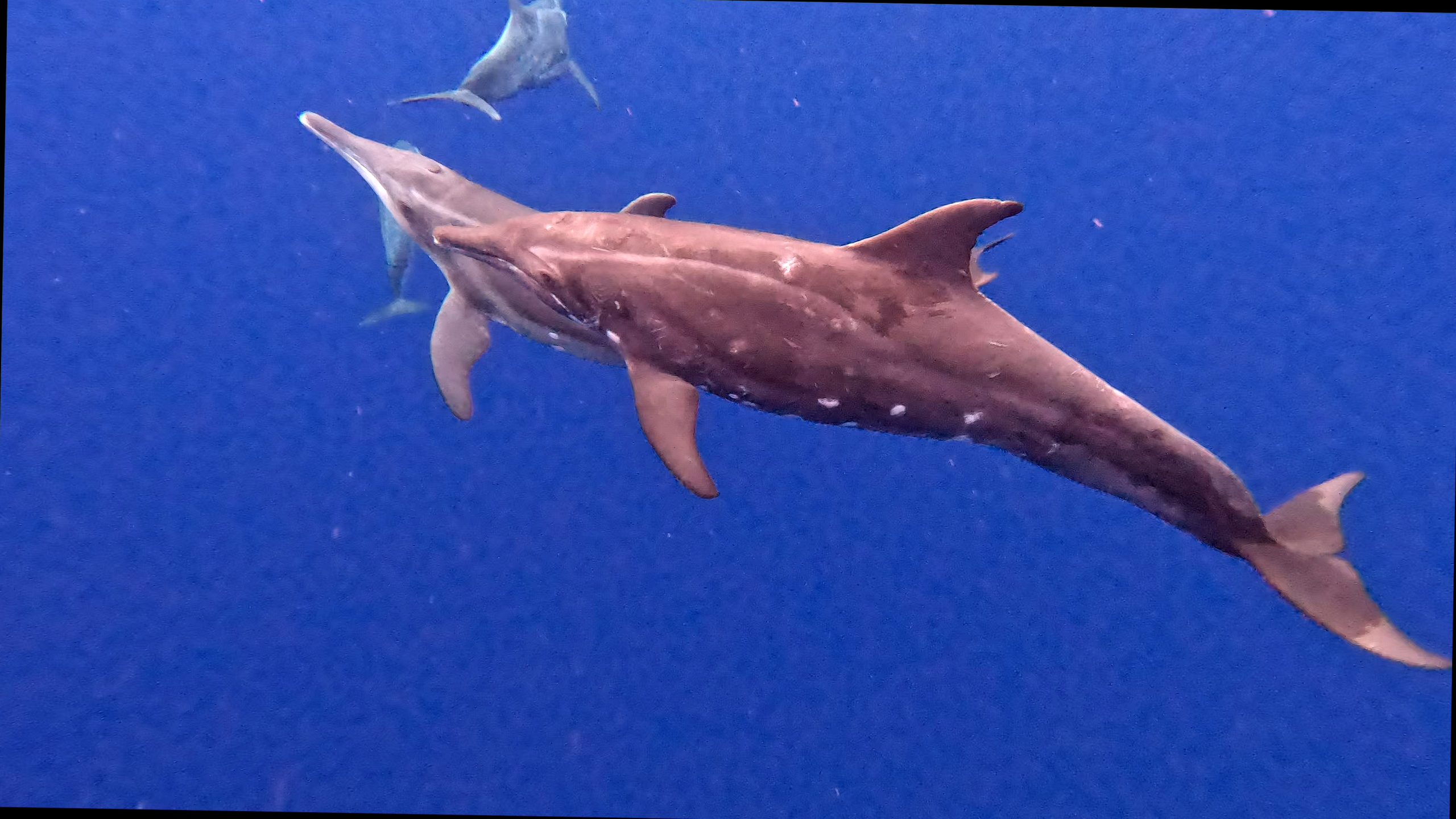
O’ahu, Hawaii: December 2023
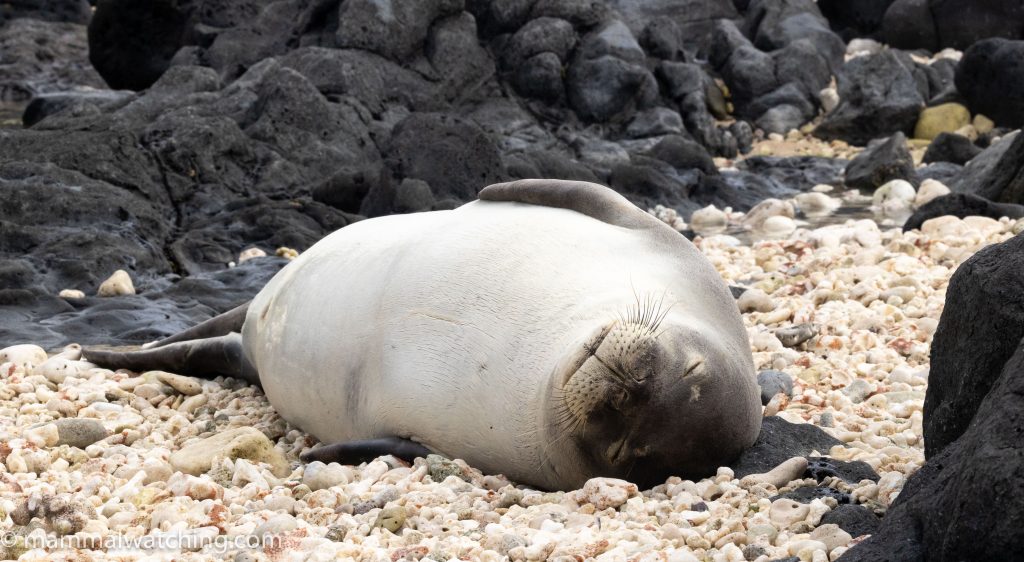
Hawaiian Monk Seal (Neomonachus schauinslandi)
I was back to Australia over Christmas with my kids and we stopped on Hawaii en route for 4 nights to: break up the journey,; tick off my 50th US State a;nd – surprise! – look for a mammal or two.
It was such a short stay that I didn’t give any serious thought to visiting any of the other islands. We spent all our time on O’ahu and stayed in Honolulu. I am not in a hurry to return to Honolulu but there did not seem to be many affordable alternative destinations on O’ahu after our plans to stay in an Airbnb in Waiaene were cancelled (the State has just forbidden AirBnB hosts from renting out their places for stays shorter than 30 days).
Ka’ena Point State Park
The main reason to visit Hawaii is obviously the Monk Seal and – thanks to Sierra Foley’s 2023 trip report – we found thee hauled out on the very tip of Ka’ena Point. The point is an hour or two’s stroll from the end of the road along the coast. We looked for seals and dolphins on the way but saw neither. I was getting nervous by the time we reached the albatross colony at the end of the trail but …. no need. Because on the tip of the point itself – pretty much 50 meters in front of the Monk Seal information board – we saw three Hawaiian Monk Seals hauled out on the rocks at the edge of the ocean. The seals seemed relaxed – though we tried not to approach them too closely – and were largely ignored by the other people there.
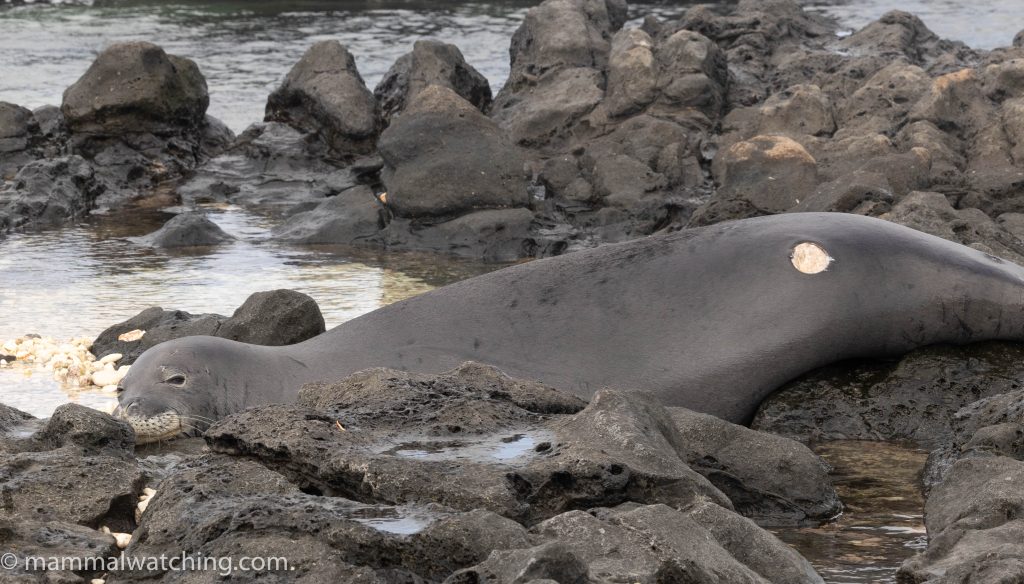
Hawaiian Monk Seal (Neomonachus schauinslandi)
This animal’s Cookie Cutter Shark bite was a source of great fascination to my kids who spent most of the walk back to the car debating whether being eaten alive by Cookie Cutter Sharks might be the most unpleasant way to die, by which point I was also fascinated. It seems that if you want to get bitten by one then Hawaii is the place.
Waianae
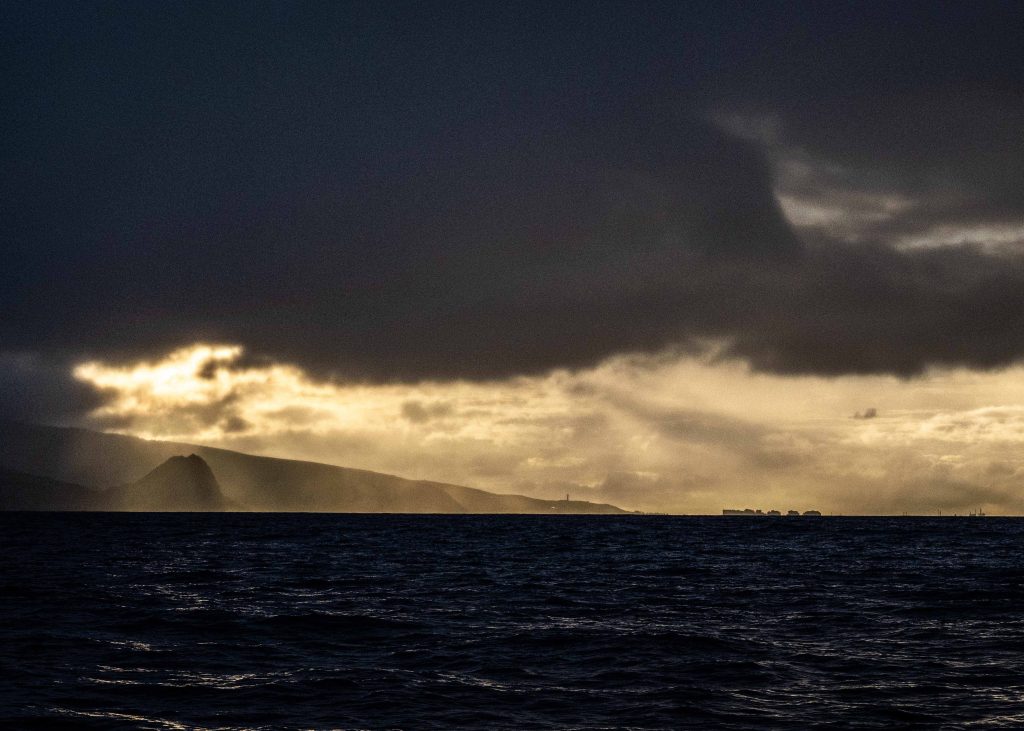
Photo: Charles Hood
Hawaii also has some fabulous cetacean viewing. I’d been following Waiaene-based cetacean watchers Wild Side Hawaii on Instagram for a while and was impressed by the number of cool species they regularly encounter and the quality of their sightings: Pygmy Killer Whales are resident here and can “usually be tracked down”, while Rough-toothed Dolphins and Blainville’s Beaked Whales are seen fairly regularly further offshore.
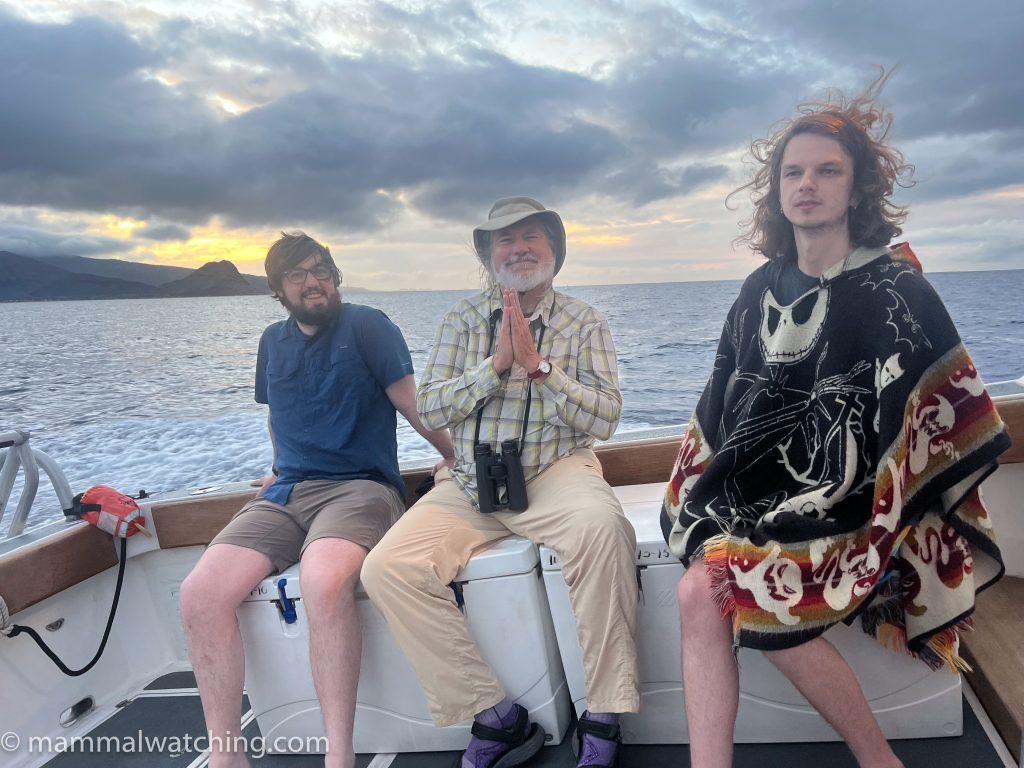
William, Charles and Patrick
Wild Side Hawaii offer several tour options. Most of their fixed departures are three hour trips which take up to six passengers. You can also arrange a private three or six hour charter.
Tori, the owner, was very helpful and quite excited when she heard about my interest in Rough-toothed Dolphins and Blainville’s Beaked Whales (my two target species). A private six hour trip, we agreed, had to be the best strategy. We would be able to get into deeper water and not get distracted by Humpbacks. Tori offered to try find three extra passengers to join me and my kids, though after Charles Hood and William Lewis responded to my post and joined us, there was only one space left: and Tori found a local photographer to fill it.
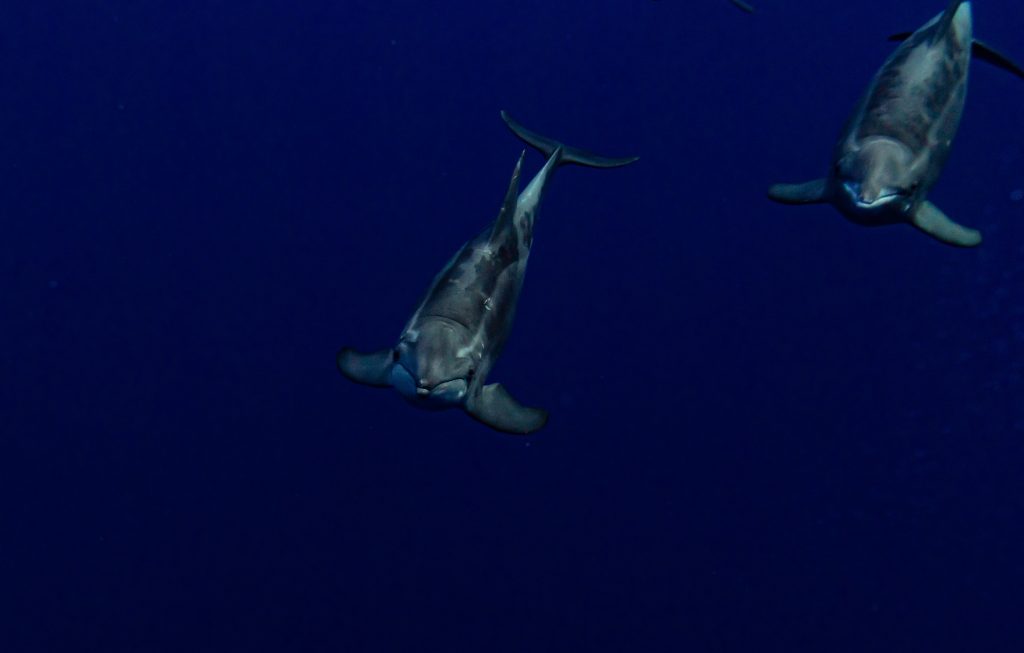
Rough-toothed Dolphin (Steno bredanensis). Photo Wild Side Hawaii.
I tried to get a sense of how rare some of the more desirable species are in these waters. Although the crew doesn’t encounter them often you have to remember that the boat spends most of its time fairly close to shore looking at Humpbacks and swimming with dolphins. My guess is that the water off of Waianae offers some of the best chances anywhere I know of for Rough-toothed Dolphins, Pygmy Killer Whales and Blainville’s Beaked Whales if you can get offshore and have calm seas. October sounds like the best month to look for cetaceans here and, indeed, in October 2023 Wild Side saw Blainville’s Beaked Whales several times. December is often windier which can make finding things harder and the forecast for our trip on December 19 was not great. Still the sea was calm at 6.30 am when we set out,
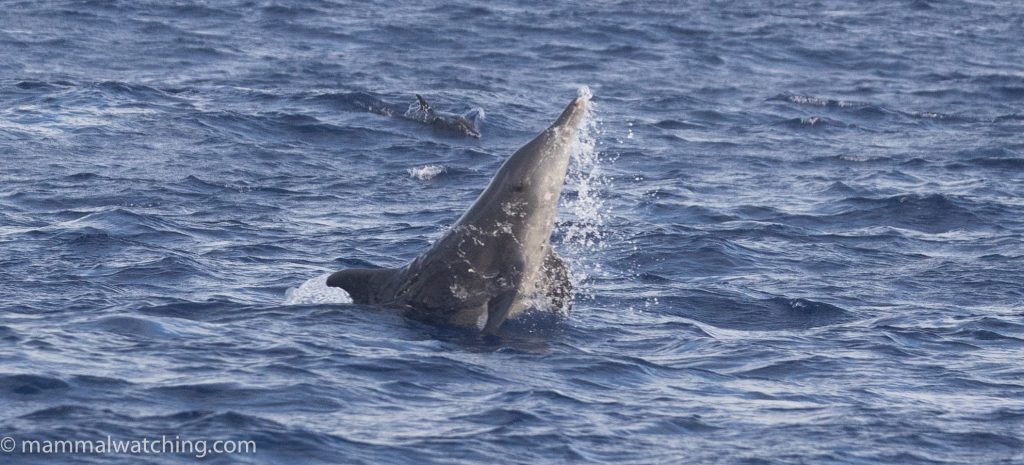
Rough-toothed Dolphin (Steno bredanensis).
After 45 minutes we saw splashing in the water near a buoy on a coiuple of miles out that marks an area popular with cetaceans. The crew thought they were Pantropiocal Spotted Dolphins but as we got closer we realized we were looking at a pod of 15 or so Rough-toothed Dolphins with a handful of Pantropical Spotted Dolphins along for the ride. The dolphins came into the front of the boat and played in the bow wave.
When I saw how excited the crew were I began to realize that these Rough-toothed Dolphins were not as easy to see here as I had imagined,. One of the crew said this was only the third time she had seen the species in 10 months despite getting out to sea almost once a day. And it was exceptional to have such a long encounter: the dolphins stayed with the boat for 45 minutes, breaching and playing around us.
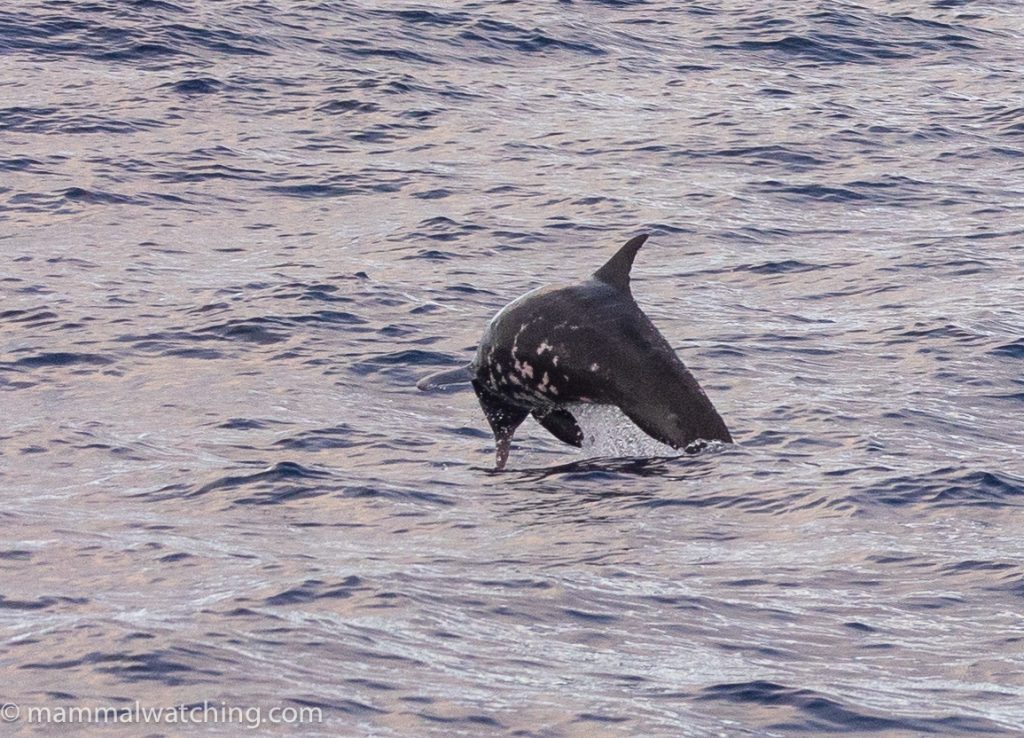
Rough-toothed Dolphin (Steno bredanensis).
After we were all happy with our views from the boat we were encourage to get in the water and snorkel.
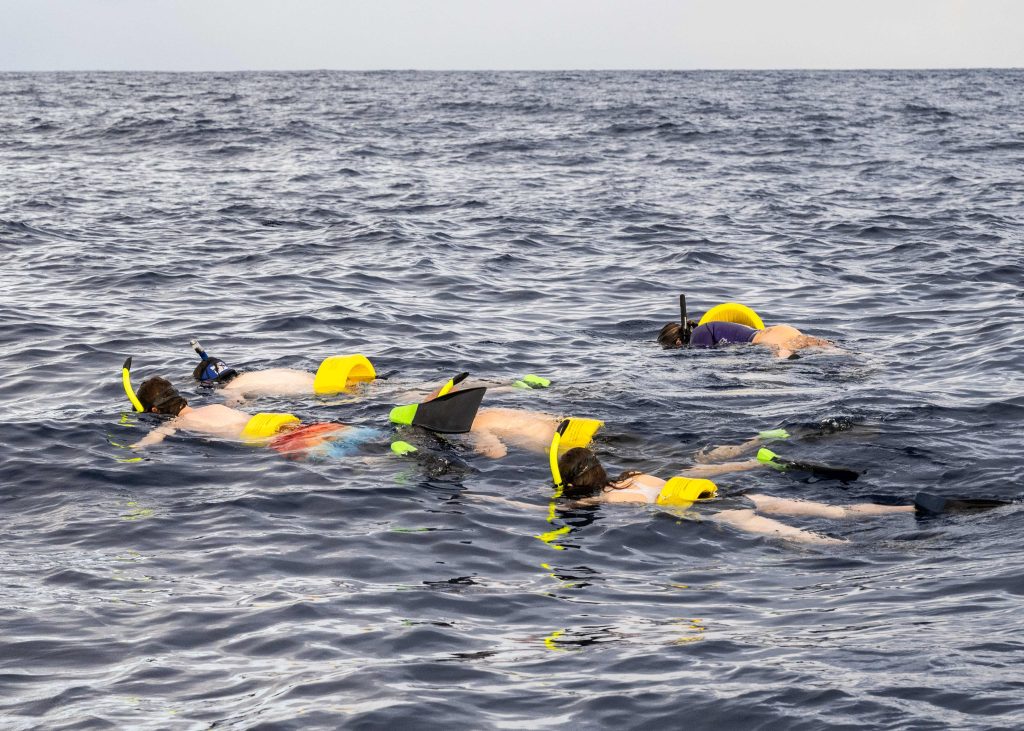
Photo Charles Hood
The captain was particularly skilled in positioning the boat into just the right spot and we had two brief but magical encounters with a pod of 15 Rough-toothed Dolphins. The visibility was jaw-droppingly good and the dolphins seemed as interested in us as we were in them.
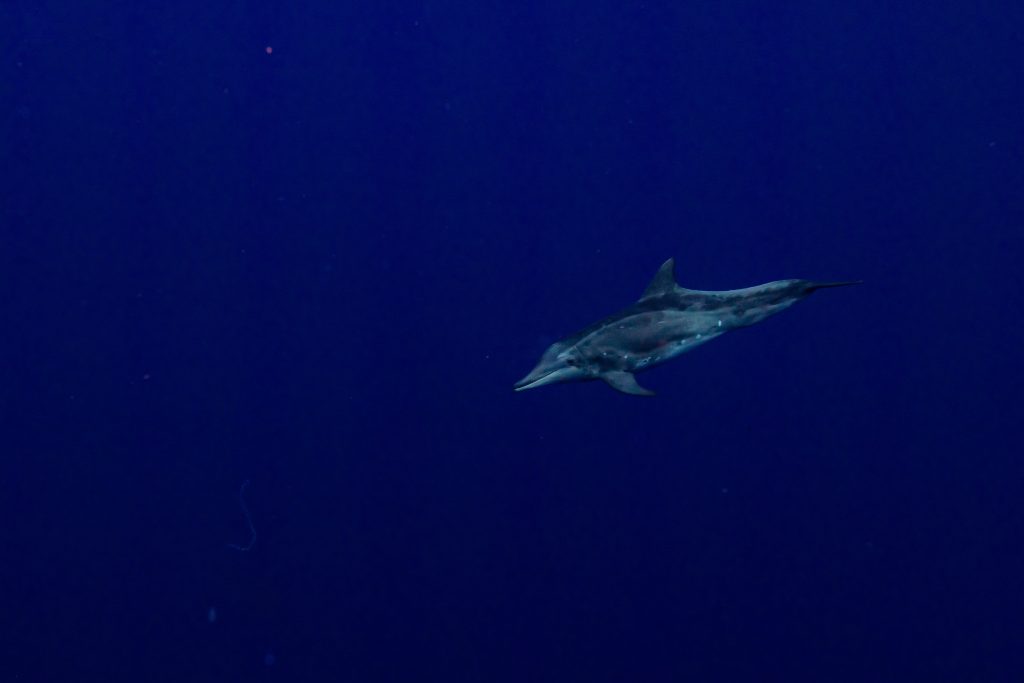
Rough-toothed Dolphin (Steno bredanensis). Photo Wild Side Hawaii.
An absolutely gorgeous species and my last remaining genus of dolphin and porpoise.
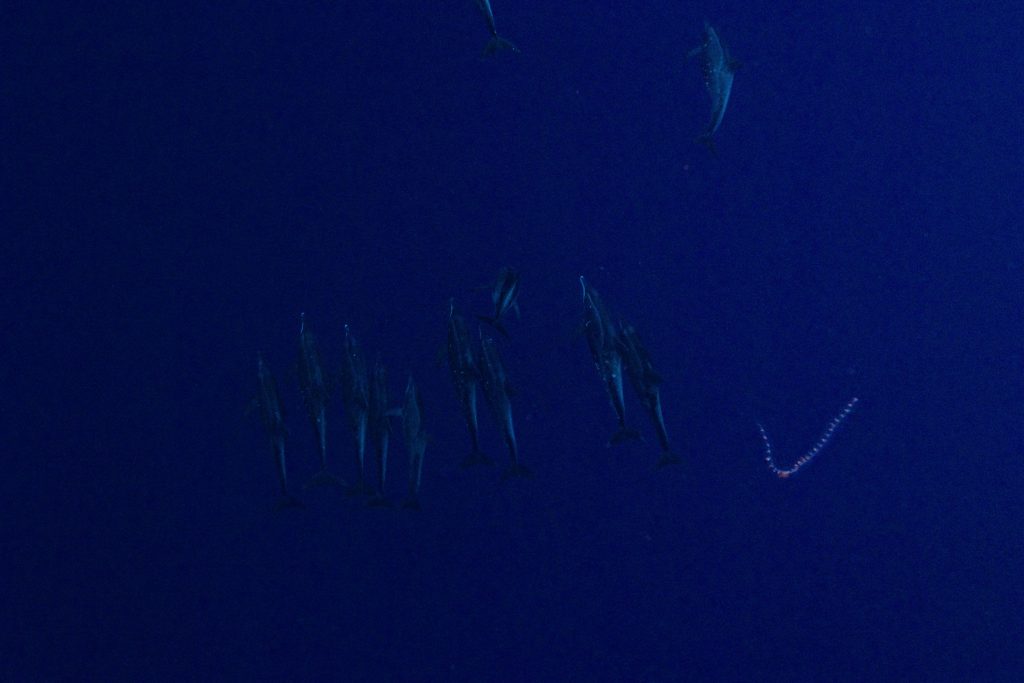
Rough-toothed Dolphin (Steno bredanensis). Photo Wild Side Hawaii.
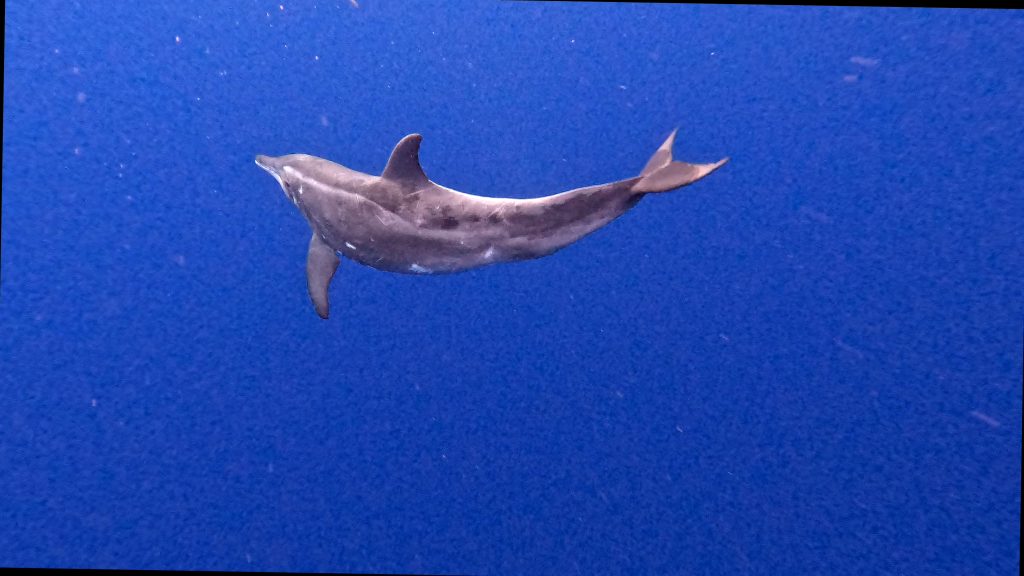
Rough-toothed Dolphin (Steno bredanensis). Photo Wild Side Hawaii.
More than satisfied with our encounters we headed further out to sea and got 20 miles or more offshore. But the wind picked up and so did the waves and we didn’t see any other mammals for the remainder of the morning.
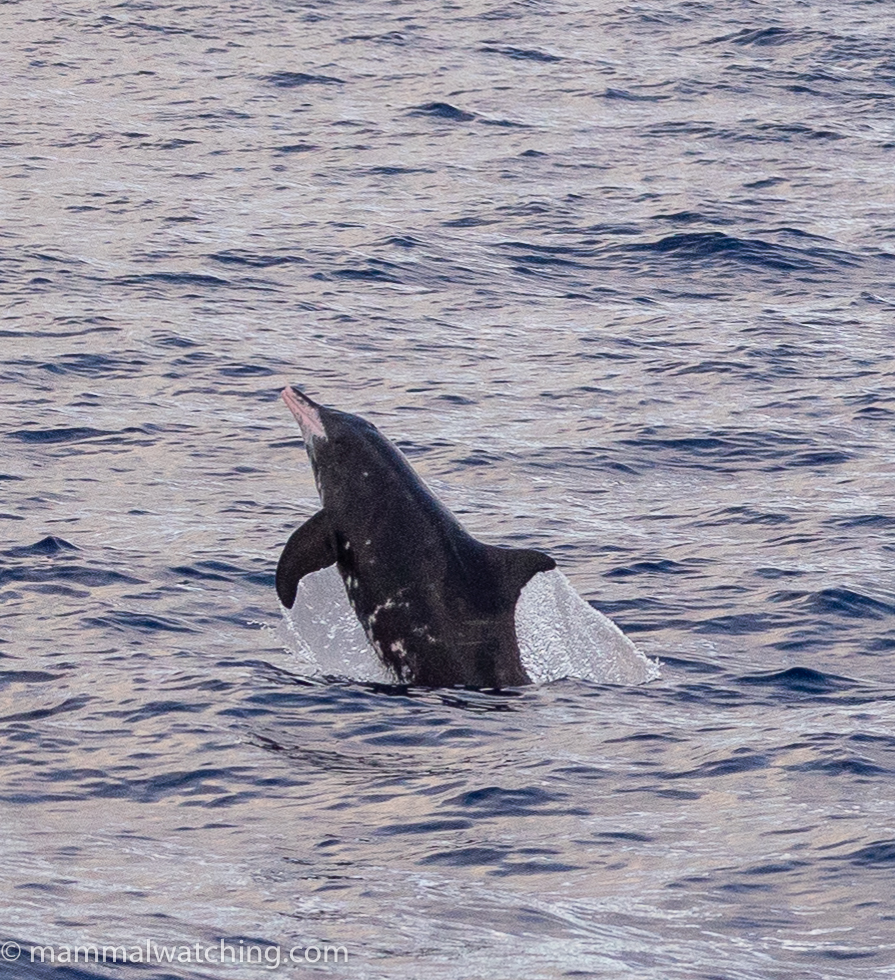
Rough-toothed Dolphin (Steno bredanensis).
A big thank you to Wild Side Hawaii. A friendly and knowledgeable crew with a fast, comfortable boat. The company seem very committed to the cetaceans’ welfare and only take a maximum of six guests at a time which seems a huge selling point to me when compared to some of the massive dolphin watching operations in the area. So they are highly recommended. Getting a group together for a private charter could be a productive way to spend a few days. Thank you too to Charles Hood and William Lewis for coming out on the water (and to Hawaii) with us.
Trip List
Hawaiian Monk Seal (Neomonachus schauinslandi) – endemic lifer
Pantropical Spotted Dolphin (Stenella attenuata)
Rough-toothed Dolphin (Steno bredanensis) – lifer
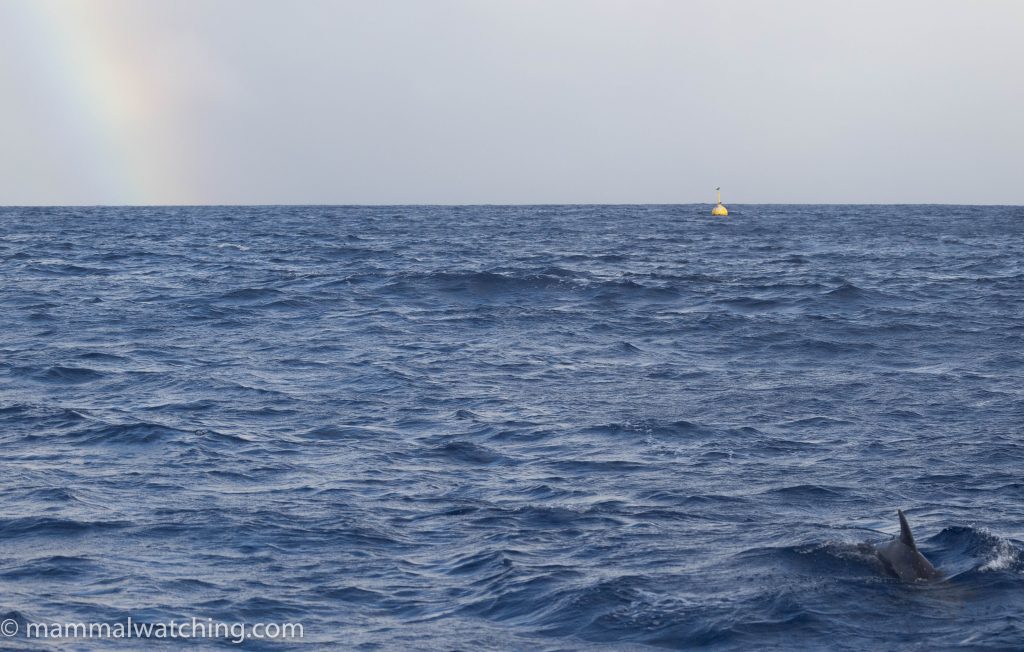
What could be more Hawaii than watching dolphins jumping in a front of a rainbow?
Post author


Leave a Reply
You must be logged in to post a comment.